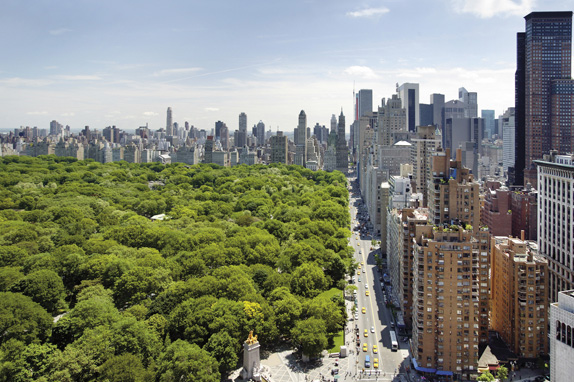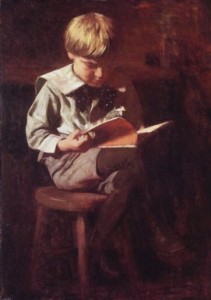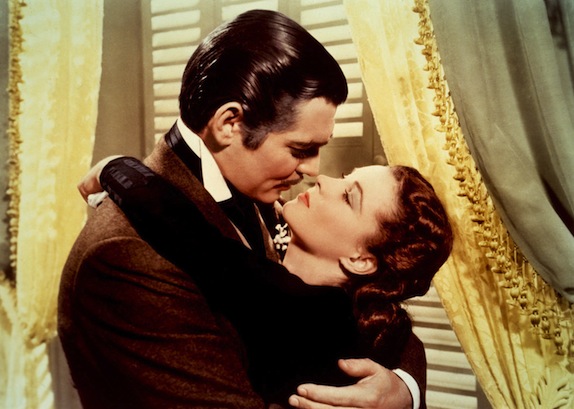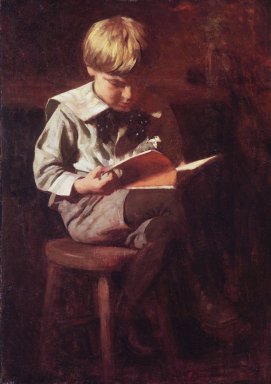Art and Cute Deviltechnology have a lot in common.
Both have a way of pushing boundaries, of helping us look at the world in new ways, and of generating the Next Big Thing.
Artists and creators alike – whether that means sculptors, animators, museum curators, illustrators, and everyone in between – are constantly looking to new technologies as a way to keep pushing beyond what’s been done before. But this level of innovation requires precise control, whether that’s through the environment or at artist’s tools.
Here are seven innovations that help artists manage their environment – and the creative process – in entirely new ways.
Illustrators the world over rely on innovative tablets like the Cintiq to give them the freedom and flexibility they need to do their job. Created by Japan-based interactive product company Wacom, the buttons and stylus have very specific settings that you can customize, so no two people using the Cintiq will utilize it in exactly the same way. The Pro Pen has over 2,000 levels of pressure sensitivity and tilt recognition, so you can control every stroke, no matter how small.
Art and engineering came together to create a unique experience in the form of temperature-sensitive murals at the Mashable House during SXSW this year. As part of Lennox’s WHAT PERFECT FEELS LIKE campaign, the exhibition set out to visually express the feeling of perfect comfort that Lennox products deliver. The installation explored the nuance of heating and cooling technologies and the individual relationship we have with these sensations.
 Original image has been replaced. Credit: Mashable
Original image has been replaced. Credit: Mashable With the help of Montreal street artist Fluke and some temperature-sensitive paint, one mural changed according the temperature level behind it. When precisely heated air from a Lennox CBX27UH air handler was applied to the mural, the thermochromic paint layer became colorless, revealing the base art underneath.
 Original image has been replaced. Credit: Mashable
Original image has been replaced. Credit: Mashable When introduced to cool temperatures from a Lennox SL18XP1 heat pump, the color returned, showing two different murals to the viewer. The second mural appeared blank at first, only becoming visible when cold compressed air was sprayed onto it.
In stop-motion animation, twenty-four frames often equal just one second of footage. That means in order to produce just a minute of footage, an animator needs to generate upwards of 1,400 unique frames. 3D printing is helping to revolutionize this process, allowing artists to design and print replacement facial expressions. By crafting a range of different expressions using a 3D printer, animators are able to portray more subtle emotions in their characters’ faces. Using a 3D printer also helps to control how precise the models are, and can print replacement parts in full color, so they don’t even have to be painted.
Virtual Reality is both a way to experience art – giving the artist complete control over what the viewer sees – and also a way to produce it. Destinations like the Renwick Gallery in Washington, DC and the New Museum in New York are looking to VR as well as AR to help facilitate a more immersive experience for museumgoers. For the artist, Google’s Tilt Brush 3D drawing and sculpting app for the HTC Vive allows you to paint in 3D within a VR world, leaving your brushstrokes suspended as if every molecule of air were your canvas. A pair of sensors set up on opposite sides of the room track your movements, so you can interact with your art in 360 degrees in this groundbreaking app. The result is a product both beautiful and immersive – and something that the average consumer couldn’t do a decade ago.
Berlin-based artists Julian Adenauer and Michael Haas created the Vertwalker, a 3D-printed robot that can climb vertical walls. With acrylic paint-filled pen in “hand,” the Vertwalker can be programmed to move in certain patterns, or to interact with its space and move toward sounds, like wall knocks. The resulting installations are both graphic and ethereal, the repeated lines accumulating in layers and crosshatches.
Creative thinkers the world over have long been drawn to Moleskine products as a way to both facilitate and inspire creation. But migrating into a digital world isn’t always easy for the luddites among us. The Moleskine Smart Notebook helps to bridge this gap. With a little help from software maker Adobe, the device looks and feels like a notebook, but the innovative page markings allow you to convert drawings done by hand into a digital file. A companion app syncs your sketches to Creative Cloud, allowing you to open them up later and edit on the computer.
Topics Sponsored Innovations
(Editor: {typename type="name"/})
 After NPR left the platform, Twitter removed all 'government
After NPR left the platform, Twitter removed all 'government
 OKCupid adds Black Lives Matter badge and profile questions about racial inequality
OKCupid adds Black Lives Matter badge and profile questions about racial inequality
 As protests spread, misinformation in Facebook Groups tears small towns apart
As protests spread, misinformation in Facebook Groups tears small towns apart
 NYT Connections hints and answers for May 2: Tips to solve 'Connections' #691.
NYT Connections hints and answers for May 2: Tips to solve 'Connections' #691.
Nvidia DLSS: An Early Investigation
Part 3: To the Mandarin Oriental by Clancy Martin
 Part 3: To the Mandarin OrientalBy Clancy MartinJune 15, 2011First PersonLast we checked, Martin was
...[Details]
Part 3: To the Mandarin OrientalBy Clancy MartinJune 15, 2011First PersonLast we checked, Martin was
...[Details]
Virtual internships and the Zoom skills you don't learn in college
 With the spread of the coronavirus, summer internships — once a staple of collegiate and post-
...[Details]
With the spread of the coronavirus, summer internships — once a staple of collegiate and post-
...[Details]
Why Write About Sex? by Lorin Stein
 Why Write About Sex?By Lorin SteinJune 24, 2011Ask The Paris ReviewDear Mr. Stein,A few of the piece
...[Details]
Why Write About Sex?By Lorin SteinJune 24, 2011Ask The Paris ReviewDear Mr. Stein,A few of the piece
...[Details]
The 10 Most Anticipated PC Games of 2017
Here with the Windies by Rachael Maddux
 Here with the WindiesBy Rachael MadduxJune 21, 2011Arts & CultureMargaret Mitchell was on her wa
...[Details]
Here with the WindiesBy Rachael MadduxJune 21, 2011Arts & CultureMargaret Mitchell was on her wa
...[Details]
The Editors on Reading Mojo and Friend Dumping
 Reading Mojo, Friend DumpingBy Lorin SteinJune 4, 2010Ask The Paris ReviewBoy Reading, by Thomas Pol
...[Details]
Reading Mojo, Friend DumpingBy Lorin SteinJune 4, 2010Ask The Paris ReviewBoy Reading, by Thomas Pol
...[Details]
TPR vs. Vanity Fair: Literary Softball Bullshit by Cody Wiewandt
 TPR vs. Vanity Fair: Literary Softball BullshitBy Cody WiewandtJune 30, 2011SoftballTeam |1|2|3|4
...[Details]
TPR vs. Vanity Fair: Literary Softball BullshitBy Cody WiewandtJune 30, 2011SoftballTeam |1|2|3|4
...[Details]
Best Sony deal: Save $100 on WH
 SAVE $100:As of April 22, the Sony WH-1000XM4 headphones are on sale for $248 at Amazon. That's 29%
...[Details]
SAVE $100:As of April 22, the Sony WH-1000XM4 headphones are on sale for $248 at Amazon. That's 29%
...[Details]
'Beau Is Afraid': Did you catch that comedian cameo?
 To say Beau Is Afraidis a wild ride is an understatement.Ari Aster's latest film, which Mashable's K
...[Details]
To say Beau Is Afraidis a wild ride is an understatement.Ari Aster's latest film, which Mashable's K
...[Details]
The State of 5G: When It's Coming, How Fast It Will Be & The Sci
Elon Musk's Twitter Blue sees a modest 28 new signups within a day of legacy checkmark purge

接受PR>=1、BR>=1,流量相当,内容相关类链接。